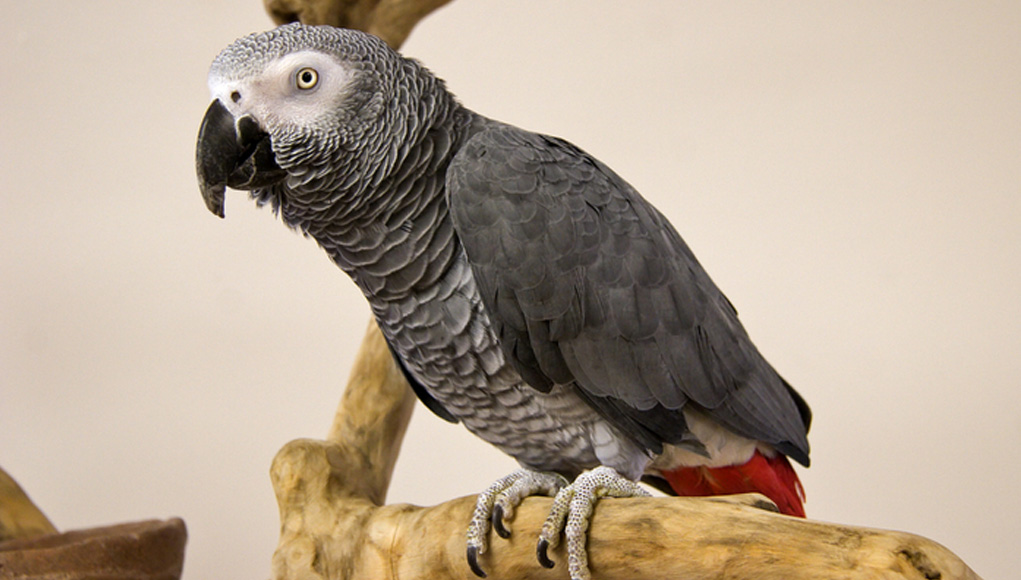African Grey Parrots For Sale
African grey parrots for sale generally inhabit savannas, coastal mangroves, woodland and edges of forest clearings in their West and Central Africa range. Though the larger of the African grey subspecies is referred to as the Congo African grey, this bird actually has a much wider natural range in Africa, including the southeastern Ivory Coast, Kenya, and Tanzania. The Timneh African grey is found in a smaller region along the western edge of the Ivory Coast and through southern Guinea. Their diet in the wild consists mostly of palm nuts, seeds, fruits, and leafy matter.
Care & Feeding
There’s a reason why the baby african grey parrots for sale is often considered the poster bird for parrot intelligence — not only is this bird inclined to amass a large vocabulary, African greys also demonstrate an aptitude for recognizing the meaning of words and phrases.
African greys need plenty of toys that challenge their intelligence, such as foraging and puzzle toys. Nutri-Berries by Lafeber Company are perfect for foraging. This complete food blends a balance of grains, seeds, and other nutrients in the shape of a berry. Because the grains and seeds are mostly whole and formed into a berry shape, it encourages African greys to hold, nibble, and even play with the Nutri-Berries. This mimics the foraging that African greys do in the wild.
African greys seem especially affected by stress and commotion in their environment and can be put more at ease by placing one corner of the cage against a wall as opposed to in the middle of a room.
African grey parrots are more prone to deficiency in vitamin-A/beta-carotene, and therefore benefit from eating vegetables high in beta-carotene, such as cooked sweet potato and fresh kale. Vitamin-D deficiency is another concern, especially for greys on a poor diet. Offering a balanced, pelleted diet, such as Nutri-Berries, for the main diet of an African grey helps prevent vitamin and mineral deficiencies. A grey that consumes a pelleted diet generally does not need vitamin supplements added to its food.
Personality & Behavior
Most bird keepers believe that only an experienced bird enthusiast should keep a congo african grey parrots for sale. They are complex parrots, highly sensitive, and more than a little demanding. They are also charming and brilliant, but this match of sensitivity and brains can lead to behavioral issues. They are creatures of habit, and even a small change in routine can make a sensitive grey unhappy. They are prone to plucking and chewing their feathers, among other bad habits. Anecdotally, the TAG has a hardier attitude and may be better for households with a lot of people coming and going. The CAG prefers a little less chaos.
African greys are social parrots that need a lot of hands-on time, however, they aren’t “cuddlebugs.” They will tolerate some head scratching and a little bit of petting, but they do not appreciate intense physical contact, though some individuals don’t mind a little snuggling. Every bird has individual tastes and preferences. A grey can also become a “one person bird,” even if every member of the household socializes with it from the beginning.
Speech & Sound
Much of the grey’s appeal comes from its talking ability. It is among the best talkers in the parrot family, able to repeat words and phrases after hearing them just once or twice. This bird reaches full talking ability around a year of age, and most individuals become capable mimics much earlier.
Not only will a grey develop an outstanding vocabulary, research has shown that this species can come to understand what it’s saying. The most famous CAG, Alex, and his colleague, Dr. Irene Pepperberg, may be the reason for the popularity of this species, and certainly for its high profile. Alex and Dr. Pepperberg worked together for 30 years at Brandeis University until his unfortunate death in 2007, due to a catastrophic event associated to arteriosclerosis (“hardening of the arteries”). In their three decades of research, Dr. Pepperberg taught Alex to recognize and identify objects, colors, and shapes. Alex could also understand the concepts of same and different, category, and could even count objects. Though Alex was on his way to much more complex thought processes, including how to read, his fellow African greys Griffin and Arthur (AKA “Wart”) are continuing to work with Dr. Pepperberg trying to reach the point that Alex had reached and even further.
But just because greys are smart and may choose to talk rather than scream, it’s a mistake to believe that they aren’t noisy. They aren’t as loud or persistent as some of the South American species, but they will learn household sounds and use them tirelessly to the dismay of guardians. Imagine the microwave beeping incessantly, or a cellphone ringing madly without the luxury of turning it off.
Health & Common Conditions
cheap baby african grey parrots for sale are especially susceptible to feather picking, calcium deficiency, vitamin-A and vitamin-D deficiency, respiratory infection, psittacosis and psittacine beak and feather disease (PBFD).
Get an African Grey Parrot
There are two distinct subspecies of the African grey parrot: the Congo African grey (Psittacus erithacus erithacus), also called the red-tailed grey and the CAG, and the Timneh African grey (Psittacus erithacus timneh), or TAG.








Reviews
There are no reviews yet.